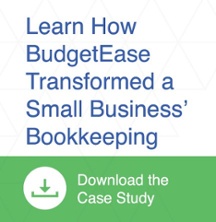 There are many moving parts in an eCommerce business. As if monitoring sales on several different platforms isn’t confusing enough, add managing inventory, taxes, payroll, and marketing. All of this can be overwhelming if you don’t have processes in place to manage your eCommerce business.
There are many moving parts in an eCommerce business. As if monitoring sales on several different platforms isn’t confusing enough, add managing inventory, taxes, payroll, and marketing. All of this can be overwhelming if you don’t have processes in place to manage your eCommerce business.
Sadly, when eCommerce companies realize they have a bookkeeping nightmare, it is often too late to make changes in the platforms they use for sales that might make the day-to-day bookkeeping manageable. Best to start with the end in mind--what sales information you are going to need to make decisions for your eCommerce business.
Understanding the nuances of an eCommerce business is important to keeping accurate financial records. Main areas of eCommerce bookkeeping are:
-
Merchant services
-
Inventory & Cost of Goods Sold (“COGS”)
-
Sales tax
-
Where to find transaction data
Merchant Services
When a sale is made via a credit card, a merchant services fee is charged. Although generally you are charged a fee for each sale made on your merchant service platform, some merchants charge a monthly fee in addition to a fee for each transaction.
The concept of merchant fees is not unique to eCommerce. When you are managing books outside of eCommerce, you rely on bank and credit card statements to identify transactions. With an eCommerce business, you need to find the transaction data (often in several places) before entering transactions into the accounting system. For example, when a deposit is made into the bank, it is the net amount (amount of the sale less the merchant services fee).
Thought needs to be given as how to best to match the credit card sales to deposits in the bank. Due to timing issues with the different types of credit cards, it is usually impossible to see an easy flow of funds from the merchant service platform to your bank account. Hence work arounds to make the process easier are used, such as clearing accounts or web applications such as Webgility.
Transactions
Seeing a transaction from Stripe, Amazon, or Shopify in the bank and entering it as income is an incorrect method. This approach leads to inaccurate income and timing issues. Since the transaction is a “net deposit”, it likely includes numerous sales, returns, shipping, discounts and sales tax. You need to go to your sales channels (Stripe, Amazon, Etsy, Shopify, etc.) to identify the particulars of each deposit.
Timing
When you record a deposit keep in mind the actual sale was prior to that date. If you have a deposit on August 3rd, the sale likely occurred at the end of July.
Understand Your Inventory and COGS
As an eCommerce business you rely heavily on accurate inventory. You will need a good grasp on:
- How to calculate COGS for every SKU you sell
- Managing the flow of your inventory
There are several applications that can make this process less painful. We have used Webgility with QuickBooks with success.
Sales Tax
Online sales tax rules can be complicated and change frequently. Make sure your bookkeeper understands the nuances of sales tax for eCommerce businesses. One area currently being worked on is how to adjust sales tax because of refunds. Stay tuned, no easy solution is available – yet.
Limitless
Since you are not bound to selling your product in a brick and mortar environment, your sales locations are limitless.
It’s an exciting time to be operating an eCommerce business. See how we can help you navigate this complicated bookkeeping environment and avoid unnecessary bookkeeping headaches by contacting BudgetEase as you are building your website.





